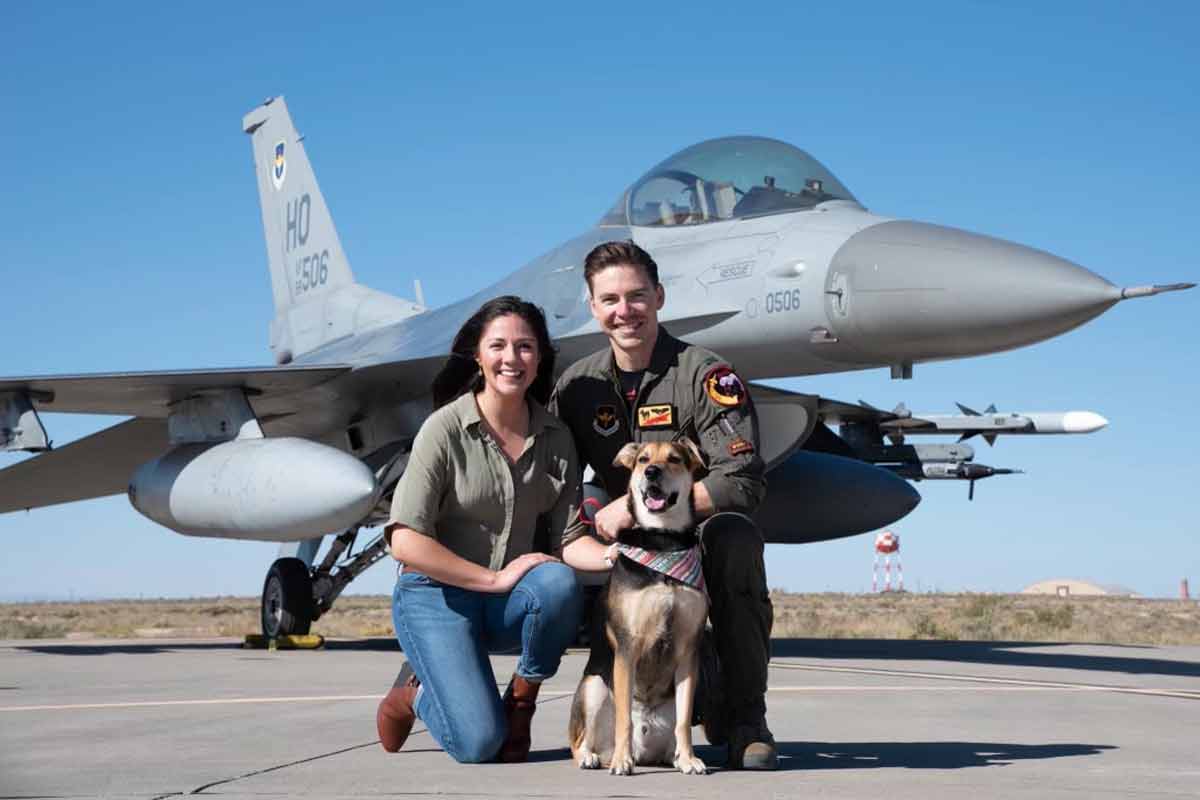Mach 1 Ejection - The Convair B-58 Hustler was one of the sexiest bombers ever made, and I'll fight you for it.
At 96 feet long end to end, it is powered by a quarter of the GE J79 engines used on the F-4 Phantom twin engines. The Hustler could briefly touch Mach 2 and could carry four B43 or B61 nuclear bombs to a combat area of 1,740 nm and a ceiling of nearly 70,000 feet.
Mach 1 Ejection

In correcting the problem of his crew being released at high speed and altitude, Hustler used collapsible capsules, thus:
This Us Air Force Pilot Survived Ejecting At Supersonic Speeds
To make sure the pills worked, they were tested on live chimpanzees and bears, with a 108-pound female bear named Yogi knocked out of a B-58 at 35,000 feet while traveling at Mach 1.3 about 60 years ago this week.
Note that the only previous high-power ejection incident reported at the time was that of F-100 Super Saber test pilot George Smith, who ejected his aircraft in 1955 while flying at Mach 1.05 and spent the following five days in a state of unconsciousness. .
Tagged B-58 Hustler , B-58 Hustler Bear , B-58 Hustler Escape Pod , Hustler Bear Test , Cold War , Uncategorized , US Air Force Weapons
Mechanix Auto, Aviation, Military... cutting almost anything I find related to mechanics, places, events, or anything I like. Even non-mechanical Persian forts. Udell spent four agonizing hours lost at sea after ejecting from an F-15 Strike Eagle. Pairing with Coffee Journal or Die.
The V Bomber Ejector Seat Controversy
Floating on a 5-foot chunk of ice, Air Force Capt. Brian Udell realized he might die. Bloodied and broken, he managed to climb into an inflatable one-person boat with one working hand before the sharks arrived. He had just exited his F-15 Eagle at night when he was traveling at Mach 1.2 and crashed into the Atlantic Ocean.
"If I had waited a third of a second longer to pull the handles, I would have touched the water that was still in my seat," Udell said in a recent interview with Black Rifle Coffee Company.
Battling hypothermia and shock, Udell did his best to stay awake, knowing that even a brief rest could be fatal. He spent hours sailing on the sea and doing mental exercises to keep his head from nodding off.

"In the open sea during the day, in calm seas, with the same angle of sunlight, there's a 74% chance they'll be able to find you," Udell said. "At night it drops to zero."
X 15 Cockpit Check
After four of the longest hours of his life, Coast Guard rescuers finally found Udell, swimming alone in dark water 60 miles off the coast of North Carolina. The former fighter pilot now flies commercial airlines, but still holds the record for surviving the fastest ejection from a fighter jet.
Mack Caltrider is a senior contributor to Coffee or Die Magazine. He is a veteran of the US Navy and a former police officer. Kaltrider earned a bachelor's degree in history and now studies everything he can get his hands on. He is also the creator of Pipes & Pages, a website designed to increase readership among soldiers. Caltrider spends most of his time reading, writing, and fighting a solitary battle against premature hair loss.
Named after five brothers who died in the Pacific, the battleship was the first US warship to be named for more than one person.
Don't call it a "tank": The M2 Bradley hunted Russian tanks in Iraq - now it will be in Ukraine.
Ejection Seat Label On The North American X 15
While the US and NATO have yet to commit to fielding full-size tanks, the Bradley is a powerful mechanized war machine.
Flying into Australia on Monday 16 January local time, the team of vets set skydiving records to raise money for Folds of Honour.
One special vet felt a connection with his fallen comrades while flying over the Egyptian pyramids. On March 21, 1962, the US Air Force tested an ejection seat system on one of its newest bombers, the B-58 Hustler. At 35,000 feet, a crimson shell burst from the top of the B-58's fuselage, sending up a rocket tongue and smoke. The camera hovered 225 feet above the plane before gravity took over and the parachutes deployed. After descending for seven minutes, the capsule came to rest in the Texas desert. Technical personnel of the Air Force rushed to the landing site and opened the clam shell.
The Convair B-58 Hustler was designed for one thing: rapid destruction. As the world's first supersonic bomber, it was designed to ensure America's air supremacy during the Cold War. With an innovative triangular wing design and no less than four powerful GE J79 engines, the Hustler could deliver a nuclear payload to a Soviet target at twice the speed of sound. While on the ground, the pilots spread the lie that the plane could travel so fast that it would clip its wings.
The Race To Mach 1
The interior of the B-58 was impressive, with separate cabins for each of the three crew members. Each cab had a rotating instrument panel with advanced electronics. The Northrop Corporation found that young people in stressful situations were more likely to pay attention to a woman's voice, so singer Joan Elms was hired to record the B-58's voice warning messages. Crews eventually nicknamed Elms "Sexy Sally."
Unfortunately, the soothing sound and speed of the paint rip aside aside, the Hustler has had its fair share of problems. On the one hand, it was difficult to control the attacker. To land and take off, the plane had to be at a 12-degree nose-up angle to hide the runway from view. The angle of inclination of the wingtips allowed pilots to accidentally enter a spin or dive. Sometimes the displacement of oil in the balance of the aircraft caused an uncontrolled change in the location of the center of gravity.
And then there was the problem of commitment. Breaking out of the plane at unimaginable speed is a very dangerous maneuver. An airplane traveling at mach 2 is traveling at twice the speed of sound. In normal atmospheric conditions, this is more than 1,500 miles per hour. Ejecting a human pilot at that speed is like dropping him into the path of an oncoming train.
The first major rescue survivor was George Smith, an Air Force test pilot. In 1955, when Smith ejected from his F-100A, his body dropped 40 g, instantly increasing his relative weight to 8,000 pounds. His internal organs hit the walls of the cavity, his body was bruised, and the air pressure forced the blood out of his ears. His eyes were bleeding before they nearly popped out of his head. And when the second charge went off to separate Smith from his seat, the concussion tore off his socks, shoes, helmet, gloves and wristwatch. Smith survived only thanks to a lucky wind that added the remains of his parachute and torn clothes. He regained consciousness five days later, after being rescued by a couple of nearby fishermen.
How A Us Air Force Fighter Landed Itself After The Pilot Ejected
Given how badly pilots like Smith could suffer at "lazy" speeds of Mach 1.05, the Air Force knew that Mach 2 craft like the B-58 would need a new exhaust system. Their solution was the Stanley Encapsulated Ejection Seat, which was less an ejection seat than an escape pod. In order to save himself, the pilot first pulled the pre-ejection handle, which brought his legs up and pulled the splintered casing towards him. Even after the capsule was closed, the pilot retained primary control of the B-58. As soon as the ejection handle was pulled, the capsule flew out of the plane, powered by small rocket boosters. The capsule was pressurized to protect the pilot from atmospheric changes and to store supplies and food in case immediate recovery was not possible. It can even float in water when landing.
Understandably, the Air Force was not interested in testing a new system for delivering aircraft to human pilots, especially when the system could become a coffin for missile launches if something went wrong. However, live black bears were the size and weight of humans and were easily obtained for testing due to Cold War animal rights regulations. Before each flight test, the bears were heavily sedated and then connected to devices that collected biometric data such as respiratory rate and EKG. A human pilot flew the B-58 for each test, with the bear capsule stored in one of the other two cockpits.
Yogi was the first bear to fly a B-58 covered seat at a top speed of 850 miles per hour. It was followed a few weeks later by Big John, which was launched to an altitude of 45,000 feet and a speed of 1,060 miles per hour. In total, as many as six bears (and one gorilla) participated in the B-58 capsule test program, launched at various speeds and altitudes. For the most part, the ursine passengers landed safely

71 mustang mach 1, mach 1 floor mats, mach 1, mach 1 baseball, mustang mach 1 wheels, mach 1 for sale, dita mach 1, km 1 ejection seat, mach 1 wheels, 2003 mach 1 wheels, sve mach 1 wheels, mach-1
0 Comments